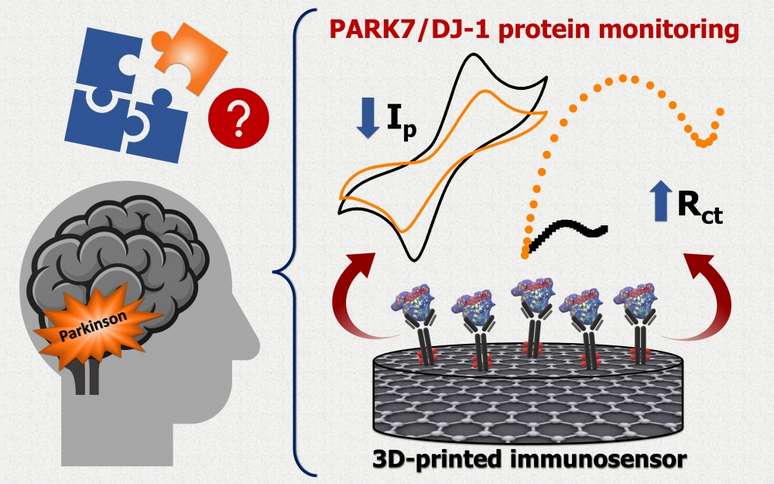The study was conducted by researchers from the State University of Campinas (Unicamp) and the Federal University of São Carlos (UFSCar)
Brazilian researchers have developed a simple and low-cost technology to detect the Parkinson’s disease in different stages. an electrochemical sensor, manufactured in 3d printerit can anticipate diagnosis, allowing for early treatment, and also serves as a model for the identification of other diseases.
The study conducted by researchers from the State University of Campinas (Unicamp) and the Federal University of São Carlos (UFSCar) was published in the scientific journal Sensors and Actuators B: Chemical.
Cristiane Kalinke, visiting researcher at Manchester Metropolitan University (UK) and first author of the paper, explains how the device can help detect the disease.
“The sensor quickly indicates the concentration of the protein PARK7/DJ-1 in human blood plasma and synthetic cerebrospinal fluid. The molecule is related to the disease of Parkinsons at levels below 40 micrograms per litre [40 μg/L]”.
He reiterates that the technology has the “advantage of being able to be printed in many different formats and sizes, including miniatures, creating truly portable devices that require a very small amount of sample”.
sensor construction

To build the sensor, the researchers used a commercial filament essentially composed of polylactic acid (biodegradable polymer known by the acronym PLA) associated with a conductive material (graphene) and other additives.
Three electrodes were molded in plastic with 3d technology and they underwent a chemical treatment that made them even more conductive and stimulated the formation of functional groups (carboxylic) on their surface, which bind with the antibodies, as the researchers explained to Agência FAPESP.
“The activation process involved removing the insulating polymer surface from the electrodes by immersing them in sodium hydroxide (NaOH) and applying an electrical potential (positive and negative). Hence, the specific reaction between the antibodies and the PARK7/DJ-1 protein provide the diagnosis,” they explain.
The subsequent phases of the work, which had the support of FAPESP, were the immobilization of specific antibodies for PARK7/DJ-1 on the surface of the electrodes and the application of the sensor to detect the protein in three concentration levels: 30 μg/L, 40 μg/L and 100 μg/L.
The average concentration in patients diagnosed with Parkinsons in different stages it is about 30 ± 9 μg/L, according to literature data.
“It is difficult for a patient to go to a medical consultation seeking a routine examination to detect Parkinson’s in its early stages,” says Juliano Alves Bonacin, professor in the Department of Inorganic Chemistry at the Unicamp Institute of Chemistry (IQ- Unicamp) and supervisor of the study. .
According to him, the idea was to build a simple and inexpensive device that would allow for time tracking and alerting doctors and patients in case of changes in protein levels.
The authors believe that the platform opens the door to the diagnosis of other diseases – in the specific case of the PARK7/DJ-1 protein, in addition to neurological problems, there is a relationship with type 2 diabetes, infertility and some types of cancer. The scientists say the goal is to expand its use to other biomarkers.
Source: Terra
Rose James is a Gossipify movie and series reviewer known for her in-depth analysis and unique perspective on the latest releases. With a background in film studies, she provides engaging and informative reviews, and keeps readers up to date with industry trends and emerging talents.







